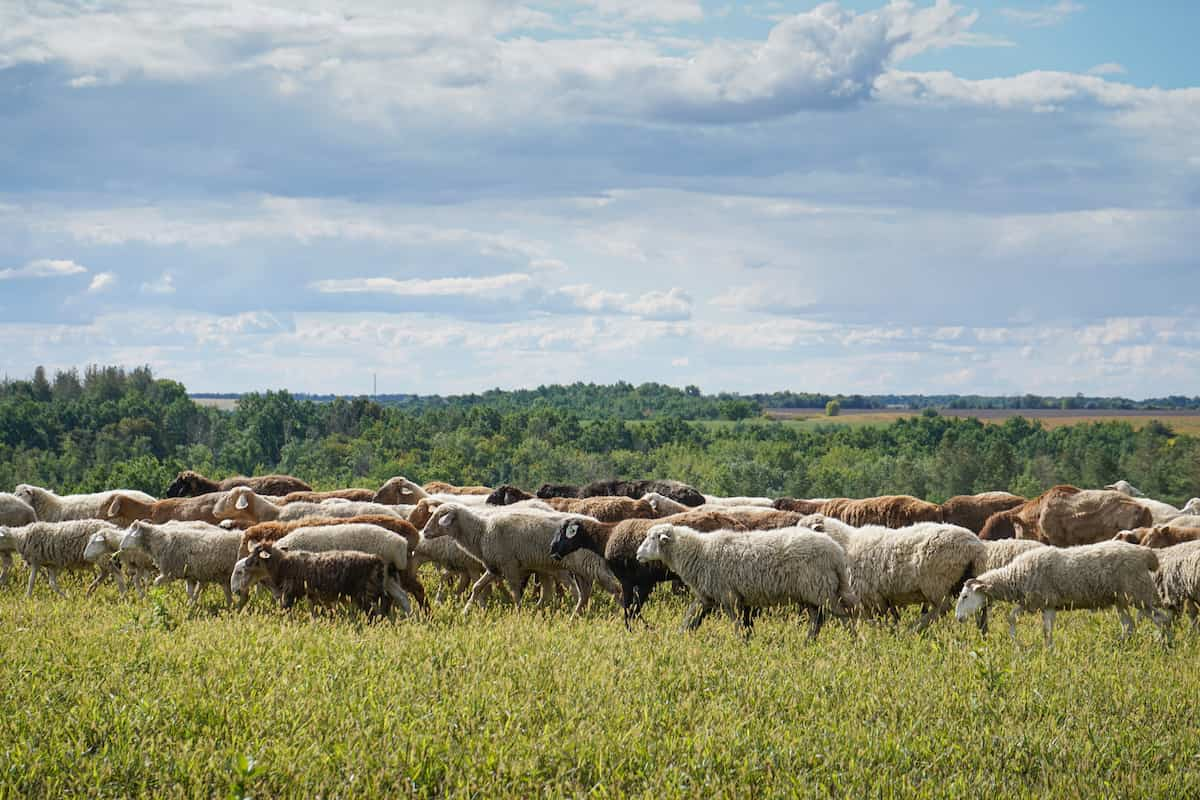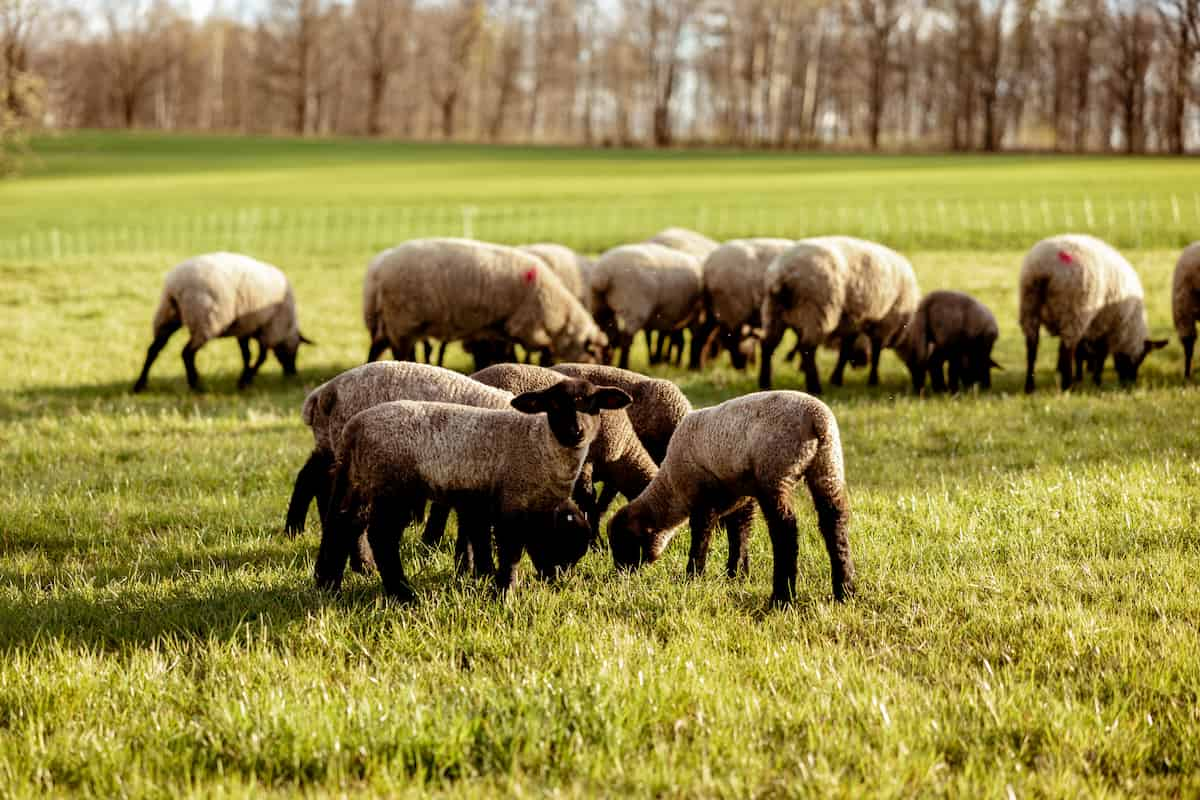Sheep farming in Bangladesh has been practiced for centuries, serving as a vital source of income, food, and raw materials for millions of people. In recent years, the industry has shown tremendous potential for growth, with increasing demands for local and international sheep products. This article provides an in-depth look at sheep farming in Bangladesh, including the industry’s unique characteristics, its major challenges, and the opportunities it presents for sustainable development and improved livelihoods.

Sheep Farming in Bangladesh
Overview of Sheep Farming in Bangladesh
Sheep farming is an integral part of the agricultural sector in Bangladesh, contributing significantly to the national economy. According to the Department of Livestock Services, the country’s sheep population has been steadily growing, with the latest figures showing around 3.2 million head of sheep.
Smallholder farmers predominantly practice sheep farming, with most sheep flocks comprising 10-20 animals. The industry is characterized by low-input, low-output systems, relying heavily on locally available resources and traditional management practices. Bangladesh has several indigenous sheep breeds, including the Bengal, Chittagong, and Barind breeds. These breeds are well-adapted to the local agro-ecological conditions, with high resistance to diseases and parasites.
Role of Sheep Farming in Rural Livelihoods
Sheep farming plays a crucial role in the livelihoods of millions of rural Bangladeshis. It is a valuable source of income, as sheep can be sold for meat, wool, and skin. Sheep manure is also used as a rich organic fertilizer for crop production.
In addition, sheep farming contributes to food security by providing high-quality protein through meat and milk and essential micronutrients such as iron and zinc. For women, sheep farming is particularly significant, as it is a culturally acceptable and accessible economic activity. Women in rural areas are often responsible for managing sheep flocks, providing them with a vital income source and independence.
Benefits of Sheep farming in Bangladesh
- Source of income: Sheep farming provides a crucial source of income for millions of rural families in Bangladesh. The sale of sheep and sheep products such as meat, wool, and skin generates revenue, contributing to improved livelihoods and economic stability.
- Food security: Sheep farming contributes to food security by providing high-quality protein through meat and milk. These products are essential for the nutritional well-being of the population, as they are rich in essential micronutrients such as iron and zinc.
- Employment opportunities: Sheep farming creates opportunities for people in rural areas, where job options may be limited. This is particularly significant for women, who are often responsible for managing sheep flocks and can derive income and independence through this culturally acceptable and accessible economic activity.
- Organic fertilizer: Sheep manure is an effective organic fertilizer that can enhance soil fertility and crop production. This contributes to better agricultural productivity and more sustainable farming practices.
Production Systems and Management Practices
- Extensive system: The most common production system is characterized by low input and output. Sheep graze on communal lands, roadsides, and fallow lands, relying on natural forage for nutrition. Farmers provide minimal inputs in terms of shelter, health care, and supplementary feeding.
- Semi-intensive system: Under this system, sheep graze on cultivated pastures, and farmers provide supplementary feed and basic health care. This system generally yields higher productivity than the extensive system.
- Intensive system: This system is characterized by high input and high output. Sheep are housed in pens and fed with balanced rations, with strict attention given to health care, breeding, and management practices. This system is more prevalent in urban and peri-urban areas, where land availability is limited.
In case you missed it: How to Start Sheep Farming in South Africa: Business Plan, Requirements, and Management

Challenges Facing Sheep Farming in Bangladesh
- Limited access to quality inputs: Sheep farmers often lack access to improved breeds, balanced feed, and veterinary services, resulting in low productivity and high mortality rates.
- Inadequate marketing infrastructure: The lack of organized marketing channels and insufficient market information often leads to lower prices for sheep products, affecting farmers’ incomes.
- Land scarcity: With increasing pressure on land resources, grazing areas are shrinking, leading to overgrazing and the degradation of pastures.
- Disease and parasite infestations: Diseases and parasites, such as foot-and-mouth disease and gastrointestinal parasites, are prevalent in sheep flocks, impacting productivity and animal welfare.
- Climate change: The changing climate threatens sheep farming, with rising temperatures, erratic rainfall, and increased frequency of extreme weather events affecting the availability of forage, water, and overall productivity.
Opportunities for Sustainable Growth
- Improved breeds and genetics: Introducing improved sheep breeds and implementing selective breeding programs can help enhance the productivity and resilience of local sheep populations.
- Capacity building and training: Providing training and capacity-building programs for farmers, especially women, can improve management practices, animal welfare, and overall productivity.
- Value-added products: Developing and promoting value-added products, such as processed meat, cheese, and handicrafts made from wool, can increase the profitability of sheep farming.
- Diversification of income sources: Encouraging farmers to diversify their income sources through agroforestry, beekeeping, and horticulture activities can help reduce the reliance on sheep farming and improve overall livelihoods.
- Climate-smart practices: Adopting climate-smart practices, such as rotational grazing, silvopastoral systems, and rainwater harvesting, can help mitigate the impacts of climate change on sheep farming.
- Policy support: Strengthening the policy environment and providing targeted incentives for the sheep farming industry can help address the challenges and unlock its potential for sustainable growth.
In case you missed it: How to Start Sheep Farming in the Philippines: Business Plan, Requirements, and Management

Conclusion
Sheep farming in Bangladesh has immense potential for growth and development, offering significant opportunities for improving rural livelihoods and contributing to the country’s sustainable development goals.
With targeted interventions, investments, and supportive policies, the industry can overcome its challenges and become a vibrant and resilient sector, providing millions of Bangladeshis with a secure and sustainable source of income, food, and raw materials. The benefits of a thriving sheep farming industry in Bangladesh extend beyond the farming community, providing valuable lessons for policymakers and practitioners globally and contributing to a more sustainable and inclusive agricultural sector.
- Feed Your Flock for Less: Top 10 Tips to Save on Chicken Feed
- Ultimate Guide to Ossabaw Island Hog: Breeding, Raising, Diet, and Care
- Hatching Answers: The Top 10 Reasons Your Chickens Aren’t Laying Eggs
- Eggs and Economics: Breaking Down the Cost of Raising Backyard Chickens
- Defend Your Greens: Proven Methods to Keep Iguanas Out of Your Garden
- Ultimate Guide to Cinnamon Queen Chicken: A Comprehensive Guide for Beginners
- Ultimate Guide to California Tan Chicken: Breeding, Raising, Diet, Egg-Production and Care
- Ultimate Guide to Marsh Daisy Chicken: Breeding, Raising, Diet, and Care
- 10 Types of Chicken Farming Businesses You Can Start for Profits